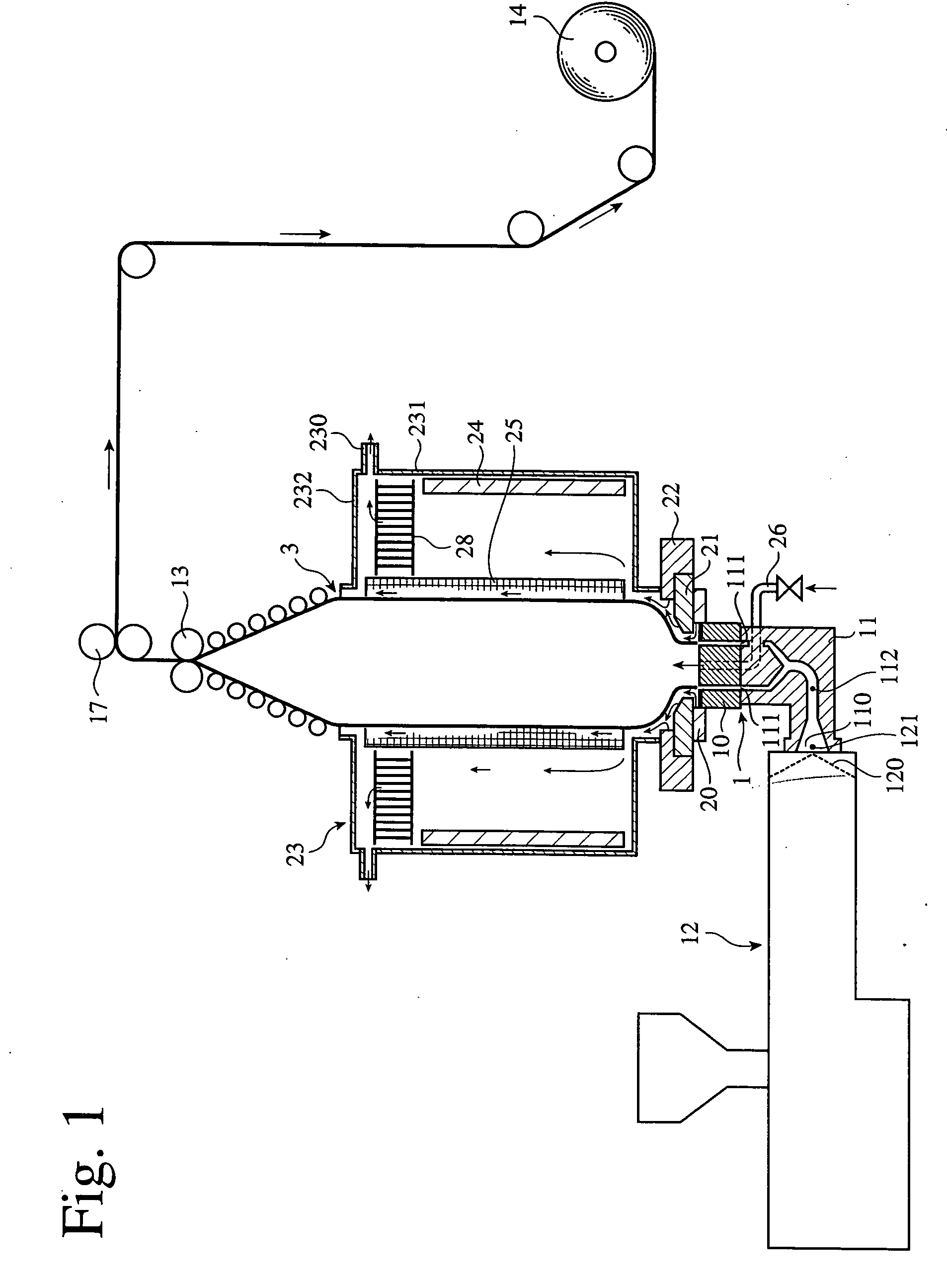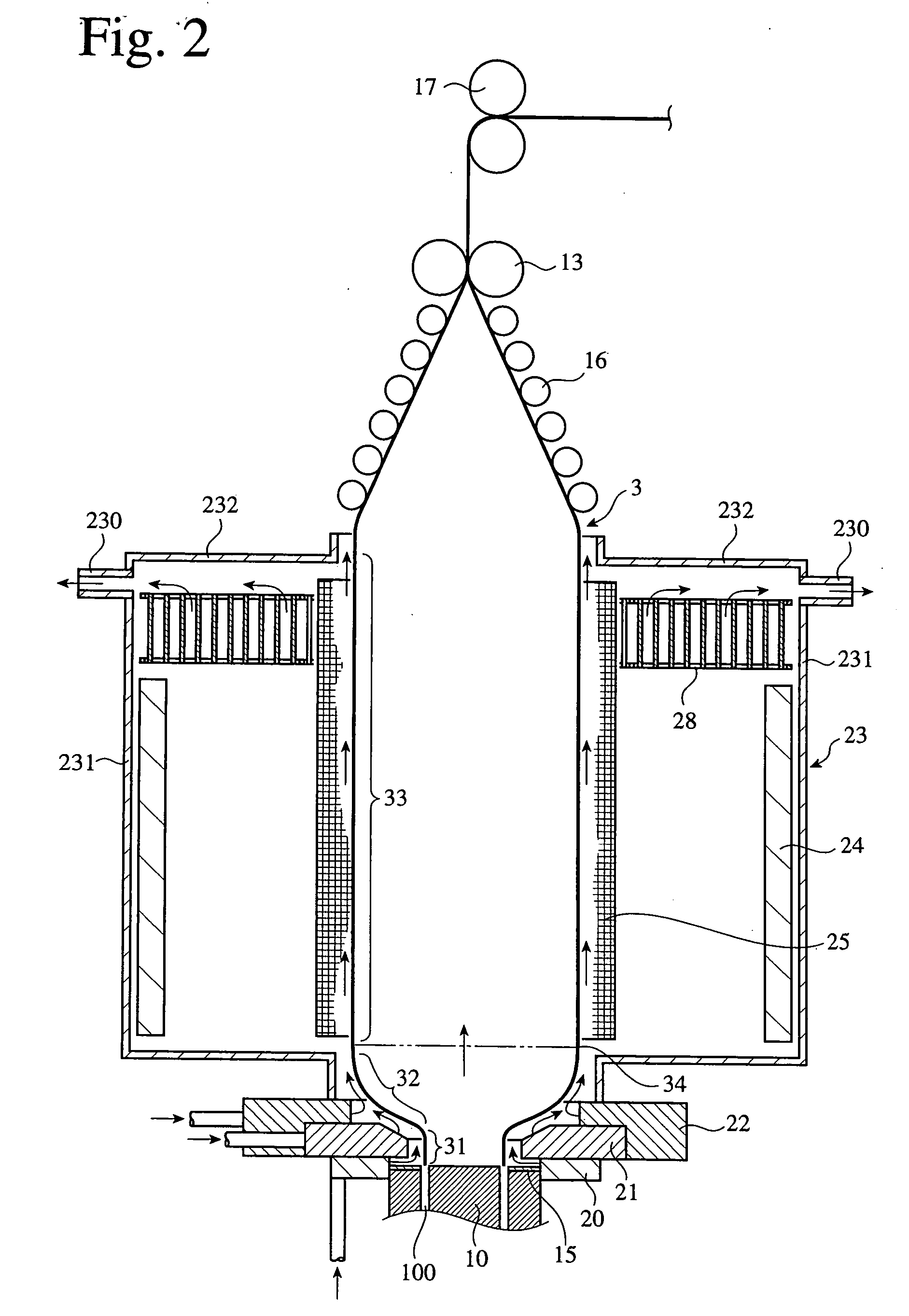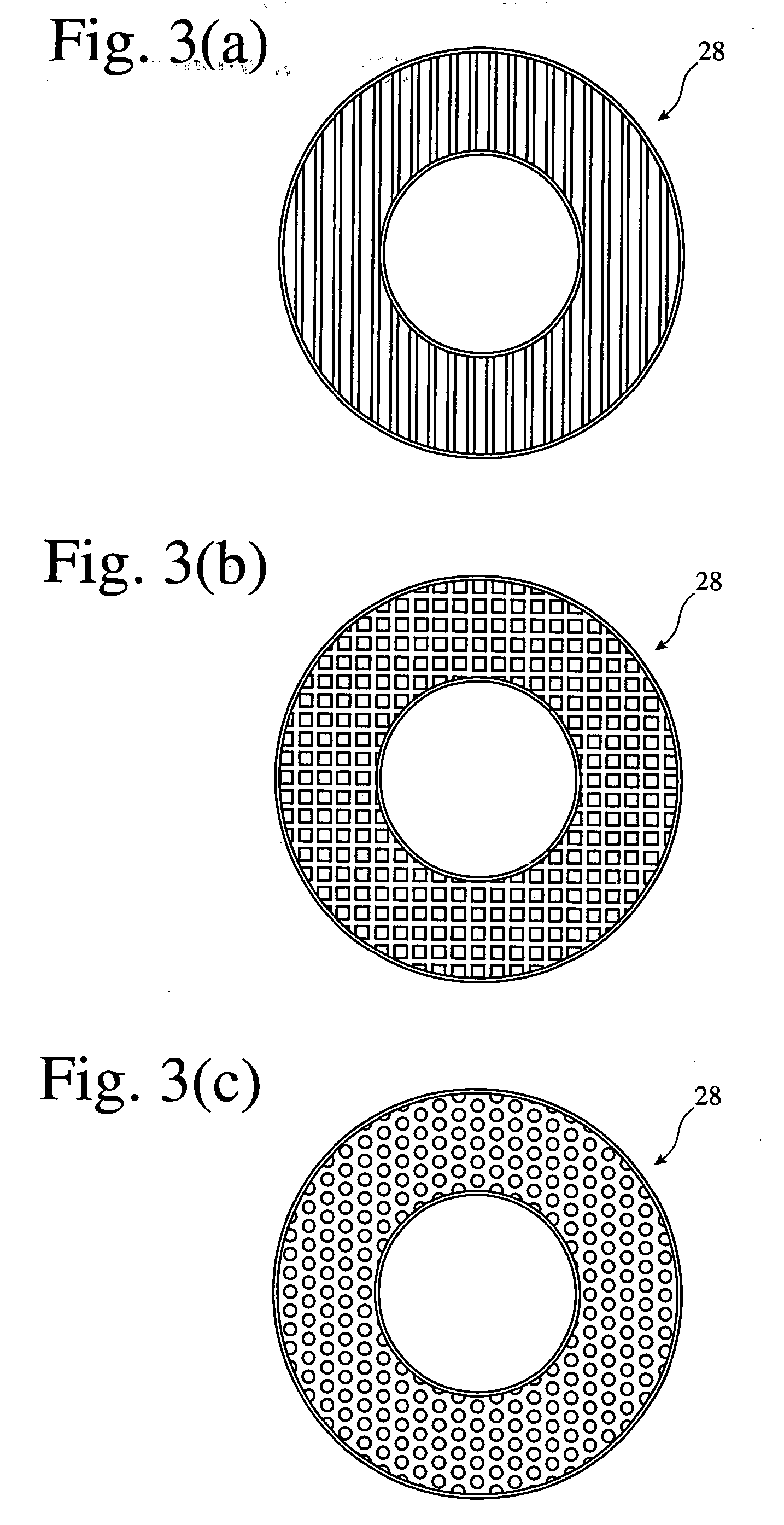Method and apparatus for producing polybutylene terephthalate film, and shape-memory polybutylene terephthalate laminate film
a technology of polybutylene terephthalate and laminate film, which is applied in the direction of packaging foodstuffs, stoppers, packaged goods, etc., can solve the problems of difficult to form polybutylene terephthalate resin, high production cost, and high production cost, and achieve excellent thermal shrinkage resistance and mechanical strength, excellent uniform film thickness, and excellent effect of uniform thickness
- Summary
- Abstract
- Description
- Claims
- Application Information
AI Technical Summary
Benefits of technology
Problems solved by technology
Method used
Image
Examples
example 1
[0238] Using the apparatus shown in FIG. 1, a PBT film was produced by an air-cooled inflation method. A PBT resin having a melting point of 220° C. and intrinsic viscosity of 1.2 [“Toraycon 1200S” (tradename), commercially available from Toray Industries, Inc.] was charged into a single-screw extruder (screw diameter: 50 mm, extrusion rate: 50 kg / hr), and melt-blended at 210° C. to prepare a molten resin in the extruder. The molten resin was then extruded from an extruder outlet at a resin-extruding temperature of 210° C. and at a resin-extruding pressure of 11.8 MPa (120 kgf / cm2), so that a tube of the molten resin was extruded from a die head (die diameter: 150 mm, die lip gap: 0.9 mm). The extruded molten resin tube was inflated at a blow-up ratio of 3.6, and (1) slowly cooled to 185° C. by ejecting warm air (30° C.) onto a neck portion of the bubble from the first hot-air-blowing means, (2) slowly cooled to 160° C. by ejecting warm air (30° C.) onto an inflating portion of the ...
example 2
[0239] A PBT film was produced in the same manner as in Example 1 except that the resin-extruding temperature was 205° C., and that the resin-extruding pressure was 12.7 MPa (130 kgf / cm2).
example 3
[0240] A PBT film was produced in the same manner as in Example 1 except that the resin-extruding temperature was 215° C., and that the resin-extruding pressure was 10.8 MPa (110 kgf / cm2).
PUM
 Login to View More
Login to View More Abstract
Description
Claims
Application Information
 Login to View More
Login to View More - R&D
- Intellectual Property
- Life Sciences
- Materials
- Tech Scout
- Unparalleled Data Quality
- Higher Quality Content
- 60% Fewer Hallucinations
Browse by: Latest US Patents, China's latest patents, Technical Efficacy Thesaurus, Application Domain, Technology Topic, Popular Technical Reports.
© 2025 PatSnap. All rights reserved.Legal|Privacy policy|Modern Slavery Act Transparency Statement|Sitemap|About US| Contact US: help@patsnap.com



